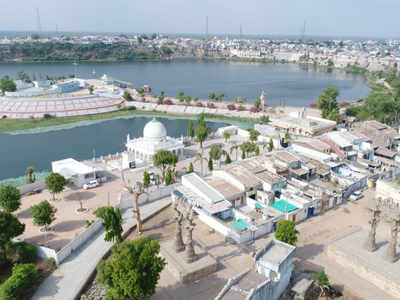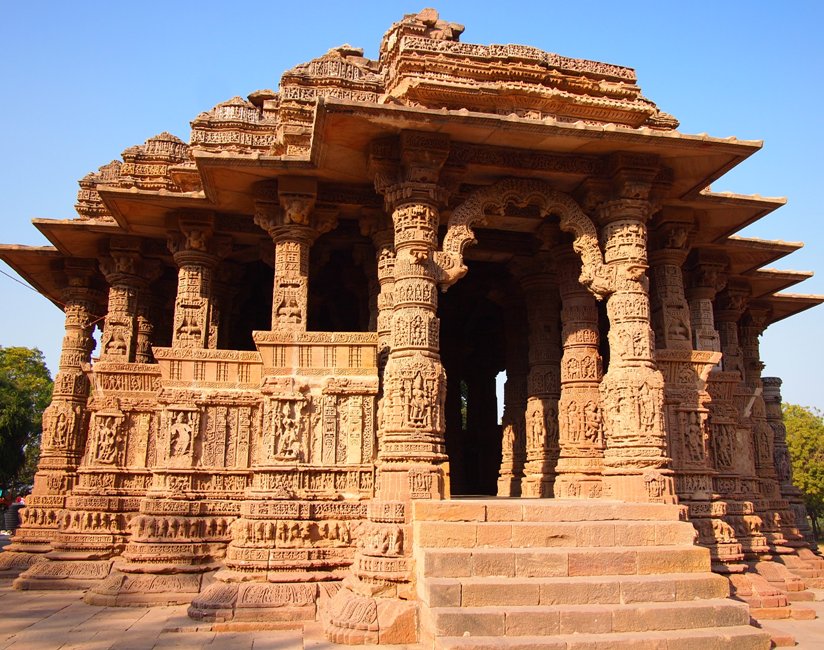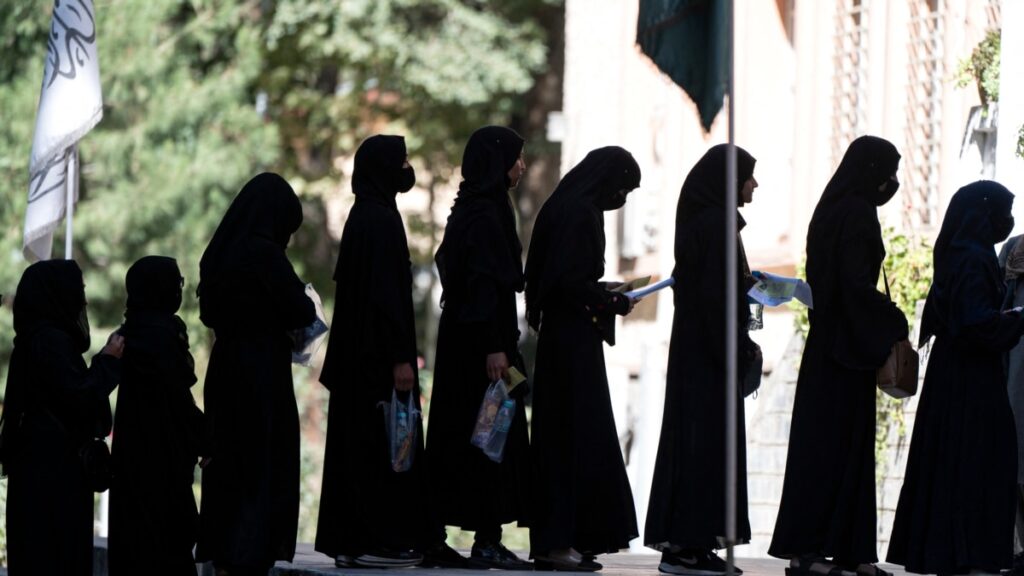
News & Editorial Analysis 21 December 2022
The Hindu News Analysis
Three more sites added to tentative list of UNESCO (Art and Culture: GS l) Page 12



Gujarat’s Vadnagar town, the iconic Sun Temple at Modhera, and the rock cut sculptures of Unakoti in Tripura have been added to the tentative list of UNESCO World Heritage Sites.
The UNESCO tentative list is an “inventory of those properties which each State Party intends to consider for nomination”.
With this, India now has 52 sites on UNESCO Tentative list.
The Sun Temple at Modhera which is dedicated to the sun god, set trends in architectural and decorative details representing the Solanki style at its best.
Vadnagar is a municipality in Mehsana district of Gujarat which still retains a large number of historic buildings that are primarily religious and residential in nature.
Unakoti is an ancient holy place associated with Shaiva worship.
#UNESCO #Sun_Temple #Unakoti #Vadnagar
Navy takes delivery of submarine Vagir to be commissioned in Jan. (Security: GS lll) Page 12

The fifth Scorpène class conventional submarine, Vagir was delivered to the Navy after completing all major trials, the third submarine delivered to the Navy in a span of 24 months.
The ship is scheduled to be commissioned into service in January.
The sixth and last of the Scorpène class submarines, Vagsheer is expected to be delivered to the Navy by 2023.
Six Scorpene submarines are being built under Project 75 by MDL under technology transfer from the Naval group of France under a $3.75billion deal signed in October 2005.
The Navy currently has 15 conventional and one nuclear submarine in service.
#Vagir #Submarine #india #Navy
Taliban regime orders nationwide ban on varsity education for Afghan girls (IR: GS ll) Page 13

The Taliban authorities on Tuesday ordered a nation-wide ban on university education for girls, as the hard-line Islamists continue to crush Afghan women’s right to education and freedom.
Despite promising a softer rule when they seized power last year, the Taliban have ratcheted up restrictions on all aspects of women’s lives, ignoring international outrage.
The ban on higher education comes less than three months after thousands of girls and women wrote university entrance exams across the country.
After the takeover by the Taliban, universities were forced to implement new rules including gender segregated classrooms and entrances, while women were only permitted to be taught by women professors or older men.
#Taliban #Afganistan #Ban_University_Education_girls’_freedom #Women’s_Rights
The Hindu Editorial Analysis
A Role For India In A World Wide Web
Context
In a time when the globe no longer presents a “optimistic image,” the recent claim made by the External Affairs Minister that India may play a “stabilising” and “bridging” role is intriguing. In terms of politics, he claimed that India could “assist de-risk the global economy” and “in some small manner, assist depolarize the world.”
The region is represented by India in international forum
“I think those are actually expectations that many other countries, particularly those in the global south, have of us,” Mr. Jaishankar said. We will strive to help where we can as we continue to communicate with all of the world’s poorest nations. Countries wanted to interact with us because they thought we had connections and could affect (global) thought in ways that might not be possible for everyone.
An outdated belief
The concept of “global leadership” is outdated in any case. What distinguishes a nation as a world power? Is it population, in which case India is predicted to pass China and grab the top spot next year as the world’s most populous nation?
– Is it nuclear capability—India has the fourth-strongest army in the world—or India’s military power, which was made public in 1998 and then legally acknowledged in the India-U.S. nuclear accord a few years later?
– Is it a growth in the economy? India has recently made great progress in this area; it is currently the third largest economy in the world in terms of PPP (purchasing-power parity) and is constantly growing. Nevertheless too many of our people still live in poverty, misery and a state of devastation.
Indian position in an increasingly interconnected world
It is odd that despite our ongoing struggles to feed, educate, and employ our whole population, so many people still view India as a major power in the twenty-first century. Therefore, the position of our country in the world of the twenty-first century will not be primarily determined by economic growth, military prowess, or demographic trends. Instead, how a nation responds to the new, interconnected global landscape and changes in the norms of international trade will determine its future position and direction.
India, for instance, should actively participate in a world where the idea of “superpowers” or “great powers” exercising “global leadership” has been replaced by the idea of becoming one.
That’s not how foreign policy works at all
Binary systems from the Cold War era are obsolete and of little use now. Additionally, the significance of the difference between domestic and foreign issues is fading. Foreign policy increasingly affects not just other countries but also our own country, not just them.
Promoting the security and well-being of one’s own inhabitants should be the overarching objective of every nation’s foreign policy. We desire a tranquil, secure environment that will foster our development and overall wellbeing while protecting us from threats and leaving our doors open to new opportunities.
In the world we live in, foreign policy cannot be summed up by one paradigm. While one of the two superpowers stands on our borders and begins to nibble at our territory, we cannot simply declare our non-alignment. We also cannot afford to give up our strategic autonomy in order to defend ourselves. A new sense of self that is based on our worldview is what we need to create.
The usage of Internet
The World Wide Web serves as a metaphor for the modern, interconnected world (WWW). We will have to traverse several networks in this more networked environment, some of which may overlap and share members while others may be different. However, each one advances our interests in their own unique way and with various objectives.
Our country’s external affairs minister welcomes Brazil and South Africa to the BRICS, but excludes China and Russia from the IBSA for South-South Cooperation. He also maintains China’s membership in BASIC for environmental negotiations while excluding Russia, and he holds annual meetings with counterparts from China and Russia in the trilateral RIC.
Several additional inconsistencies
This kind of internet-based networking mimics a number of irregularities found in our surroundings. Due to its colonial past and the 75 years it has spent coexisting as a democracy with many of the nations it criticises, India is a member of both the non-aligned movement (NAM) and the community of democracies.
India is the best example of both the G-20 global macroeconomic “management” and the G-77 (Group of 77), a global “trade union” made up of 120 underprivileged countries (Group of 20 developed and developing countries whose presidency India has just assumed).
India has a sizable presence in the United Nations, a supranational organisation with 193 members, as well as the South Asian Association for Regional Cooperation (SAARC), which only represents India’s seven neighbours.
We have the incredible ability to engage in all of these fantastic institutional networks, pursuing a variety of objectives with a variety of partners, and successfully matching ourselves with each of their legitimate purposes. From non-alignment to multi-alignment, India has advanced.
Conclusion
Because they are aware that no one will ever attempt to undermine their sovereignty, India and the majority of other nations can now take it for granted. There is no longer a struggle to uphold our strategic independence since it is a given. We can now shift from a post-colonial concern with self-preservation to a new role engaging in the development of international laws and even having a role in their enforcement. We can shift from concentrating only on our own sovereign autonomy to acting responsibly on the global stage.
#India #World_Wide_Web #Internet #Relegion
The Indian Express Analysis
Trends In Organ Donation
Context
Organ donation rates increased in 2021 after falling in the first year of the Covid-19 pandemic. However, according to information presented by the administration in Parliament, the number of deceased donors or organs donated by family members of those who had cardiac or brain death has remained lower than the number of donations from living people.
Analyzing the data on organ donations
Only 1,743, or slightly more than 14%, of the 12,387 organs removed in 2021—including kidney, liver, heart, lungs, and pancreas—were from deceased donors.
According to the data, 2021 saw almost as many harvests as the highest of the previous five years (12,746, in 2019).
The statistics favour live contributions, such as kidney and liver transplants from living relatives.
Organs from living donors were removed in total by 10,644, which is more than the 10,608 living contributions in 2019. From 16.77% in 2019 to just 14.07% in 2021, all organs harvested came from deceased donors.
The deceased’s donations also have a geographical focus. Telangana, Tamil Nadu, Maharashtra, Gujarat, and Karnataka got more than 85% of all dead organ donations in 2021; neither of the other two states received any. In Goa, two organs were removed from a deceased donor.
The geographic skew may be a result of the concentration of centres for organ transplant and harvesting in certain regions.
In order to change the current pattern, which now sees roughly 80% of transplants using organs from living donors rather than the deceased one due to its medically advantageous condition, concerned officials are actively striving to do so.
Why is increasing bereavement presents so important?
The country needs more organ transplants than there are available organs, which is the first contributing cause.
India performs the third-highest number of transplants globally in terms of absolute numbers. – However, only 8,000 of the projected 1.5–2 lakh people who require kidney transplants annually actually receive one. – Only 1,800 of the 80,000 people who need liver transplants actually receive one. Only 200 of the 10,000 patients who need a heart transplant actually receive one. – As lifestyle disorders grow increasingly prevalent, demand is rising. Additionally, only deceased donors can have organs like the heart and lungs removed.
The second assertion is that a priceless resource would be wasted without the contributions of the deceased. – In India, automobile accidents claim the lives of up to 1.5 lakh people annually, many of whom would benefit from organ donation. – The majority of organs are currently received from people who are brain dead, even though donations are still feasible after the heart stops beating.
In India, 0.52 organ donations are made for every million people. However, Spain has the highest rate of organ donation in the world at 49.6 per million people.
Spain has an opt-out system in which a person is deemed to be a donor unless otherwise specified, in contrast to India, where a person must register to be an organ donor and the family must give consent after death.
How might offerings to the needy be increased?
According to a publication in the British Journal of General Practice, Spain’s high rate of deceased donors is also attributed to the fact that the transplant coordinator has medical expertise.
Transplant coordinators are employed by the top hospitals in India that can harvest organs to explain and walk the families through the procedure.
Although there are at least eight deceased donor organs available, only 2.6 have been transplanted as of this writing.
Additionally, more people might benefit from organ harvesting if cardiac death rather than brain death occurs in the donors.
Because the blood supply that oxygenates the organs after cardiac death stops flowing, a rapid organ harvest is required.
However, in India, it is already too late by the time the family members learn of the passing and travel from various locations inside the city or even from beyond the city.
Given Indians’ propensity for giving, it is essential that the general public comprehend the importance of organ donation in order to persuade more people to register as donors.
Events must be regularly scheduled to accomplish the twin goals of raising awareness and fostering conviction that donated organs are genuinely helping people.
Additionally, efficient transportation among cities and between states might support organ donation.
How can one register to donate?
You can register as an organ donor on the NOTTO website or by mailing a filled-out Form 7 of the Transplantation of Human Organs Act. It’s crucial for donors to express their beliefs to their families in addition to signing up. This is done in order to ensure that, even with a donor card, the family’s permission may be obtained for organ donation when a person passes away. The organ harvesting is not done if the family objects.
Programmes implemented by the government to encourage organ donation
The National Organ Transplant Programme (NOTP) of the Indian government encourages organ donation and transplantation throughout the nation. Among the program’s elements is financial assistance for: – Establishing SOTTOs (State Organ and Tissue Transplant Organizations) in every State and UT.
Constructing new facilities for organ transplant and organ retrieval and enhancing the ones that already exist. creating state, regional, and national biomaterial centres.
Appointing transplant coordinators to trauma centres and medical schools.
Support for a deceased donor
A dignified funeral for the donor who passed away
Immunosuppressive medications that are given to BPL patients after transplantation.
The construction of green corridors for quicker organ transportation will be facilitated by improved collaboration between the Road, Railway, and Aviation Ministries.
The hospital notifies the state organ and tissue transplant organisation when an organ becomes available under the current method so that it can be matched with nearby recipients. The organ is subsequently sent to the regional organisation in charge of organ and tissue transplants, which then gets in touch with NOTTO, if a match cannot be found.
Conclusion
Organ donation offers patients who have run out of other options for hope a chance to live and prosper. People should donate their organs because it demonstrates their concern for the underprivileged and social responsibility. The government should also step up efforts to increase awareness and build infrastructure along the lines of the “green corridor” in order to guarantee that donated organs are transported to individuals in need as quickly as feasible.
#Organ_Donation #Trend #Government_Programs
WEBSITE : https://geoias.com/
FACEBOOK : https://www.facebook.com/geoiaskolkata
INSTAGRAM : https://www.instagram.com/geoias
TWITTER : https://twitter.com/GeoIas
EMAIL ID : info@geoias.com
TELEGRAM : https://t.me/Geo_Ias
MOBILE APP : https://treeloki.page.link/Rg1u
YOUTUBE : https://www.youtube.com/@geoiasupsc
FORONLINE/OFFLINE CLASSES : +91 9477560001, 9477560002




